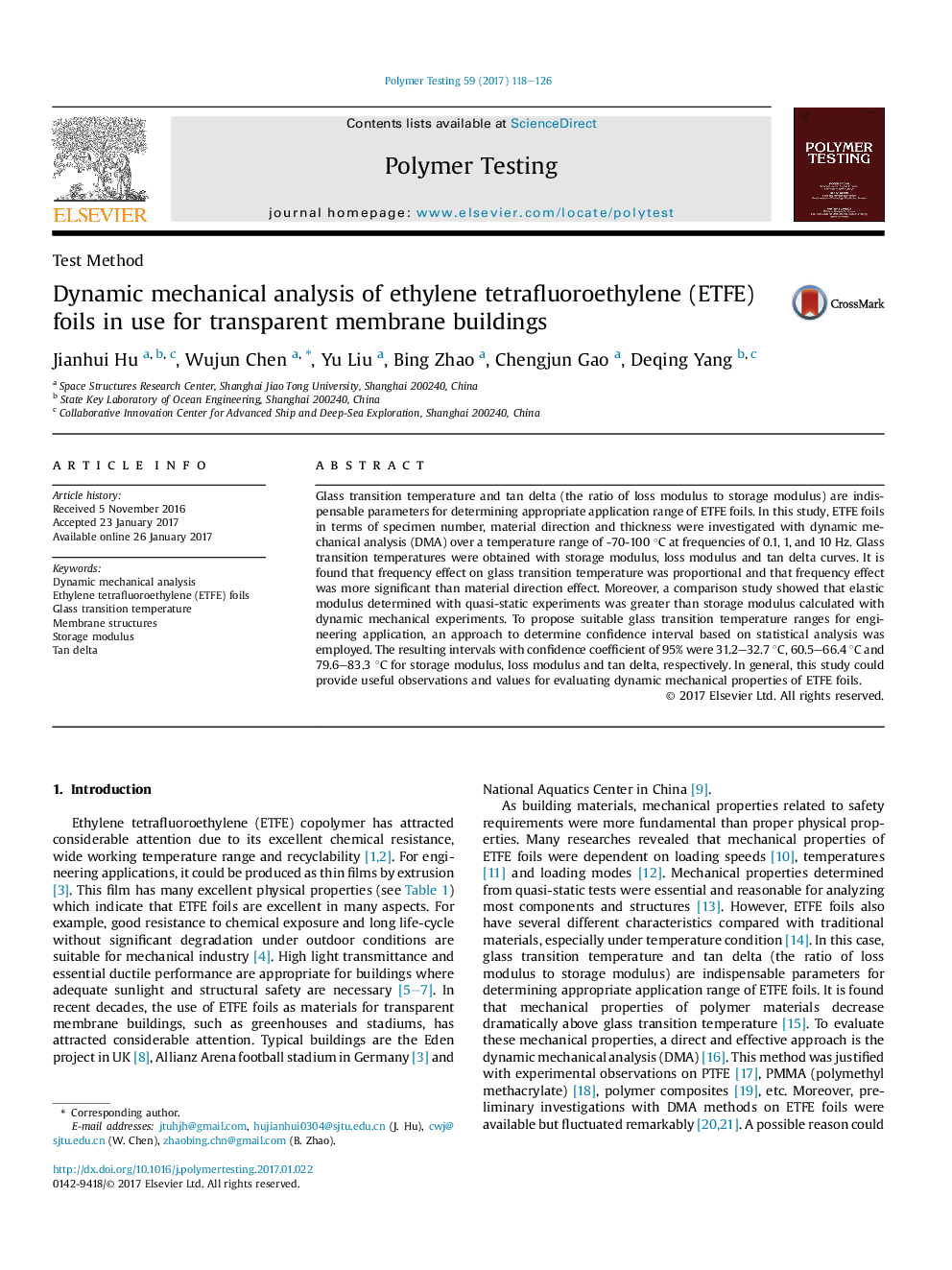| Article ID | Journal | Published Year | Pages | File Type |
|---|---|---|---|---|
| 5205484 | Polymer Testing | 2017 | 9 Pages |
Abstract
Glass transition temperature and tan delta (the ratio of loss modulus to storage modulus) are indispensable parameters for determining appropriate application range of ETFE foils. In this study, ETFE foils in terms of specimen number, material direction and thickness were investigated with dynamic mechanical analysis (DMA) over a temperature range of -70-100 °C at frequencies of 0.1, 1, and 10 Hz. Glass transition temperatures were obtained with storage modulus, loss modulus and tan delta curves. It is found that frequency effect on glass transition temperature was proportional and that frequency effect was more significant than material direction effect. Moreover, a comparison study showed that elastic modulus determined with quasi-static experiments was greater than storage modulus calculated with dynamic mechanical experiments. To propose suitable glass transition temperature ranges for engineering application, an approach to determine confidence interval based on statistical analysis was employed. The resulting intervals with confidence coefficient of 95% were 31.2-32.7 °C, 60.5-66.4 °C and 79.6-83.3 °C for storage modulus, loss modulus and tan delta, respectively. In general, this study could provide useful observations and values for evaluating dynamic mechanical properties of ETFE foils.
Keywords
Related Topics
Physical Sciences and Engineering
Chemistry
Organic Chemistry
Authors
Jianhui Hu, Wujun Chen, Yu Liu, Bing Zhao, Chengjun Gao, Deqing Yang,
